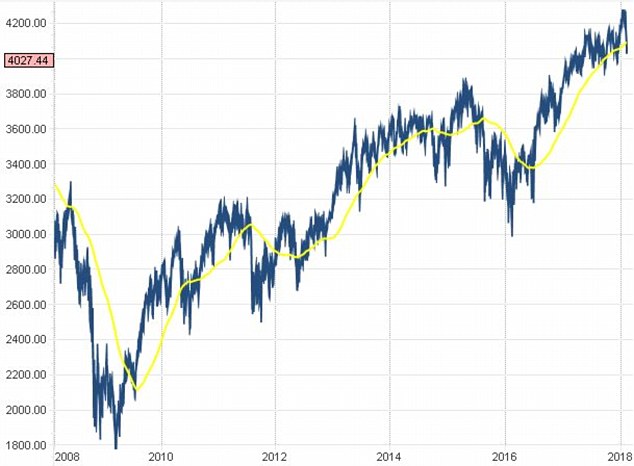When stock markets take a tumble there is always a rush of experts offering helpful tips.
Don’t panic, markets don’t go up in a straight line, remember investing is a long-term game, is the general gist.
And that is all good advice. If you pay heed to such sentiment and invest over decades, then you will almost certainly end up richer.




Zoom in over a shorter time period on the FTSE All-Share in blue and 200 day moving average in yellow, as this chart showing the past three years does, and you see that there is less noise
You get a lot of noise and while it’s fairly simple to get the charts for markets, individual shares and even ETFs and investment trusts, it is very hard to get it for funds.
I looked at my Isa this week and weighed up this method. My realisation was that checking each holding against its 200 day moving average would be hugely time-consuming and individually selling them even more so – not to mention the trading costs.
I may then be likely to miss buying back in, when I forgot to check back regularly.
In theory, using a 200 day moving average rule would benefit me. In practice, even if I managed to avoid false signals where investments moved slightly over the line before swiftly returning, my real-life behaviour would most likely doom me to failure.
Ultimately, even with a very simple rule such as this, you will probably foul things up.Â
And that’s why those ‘hold tight’ experts have a point.